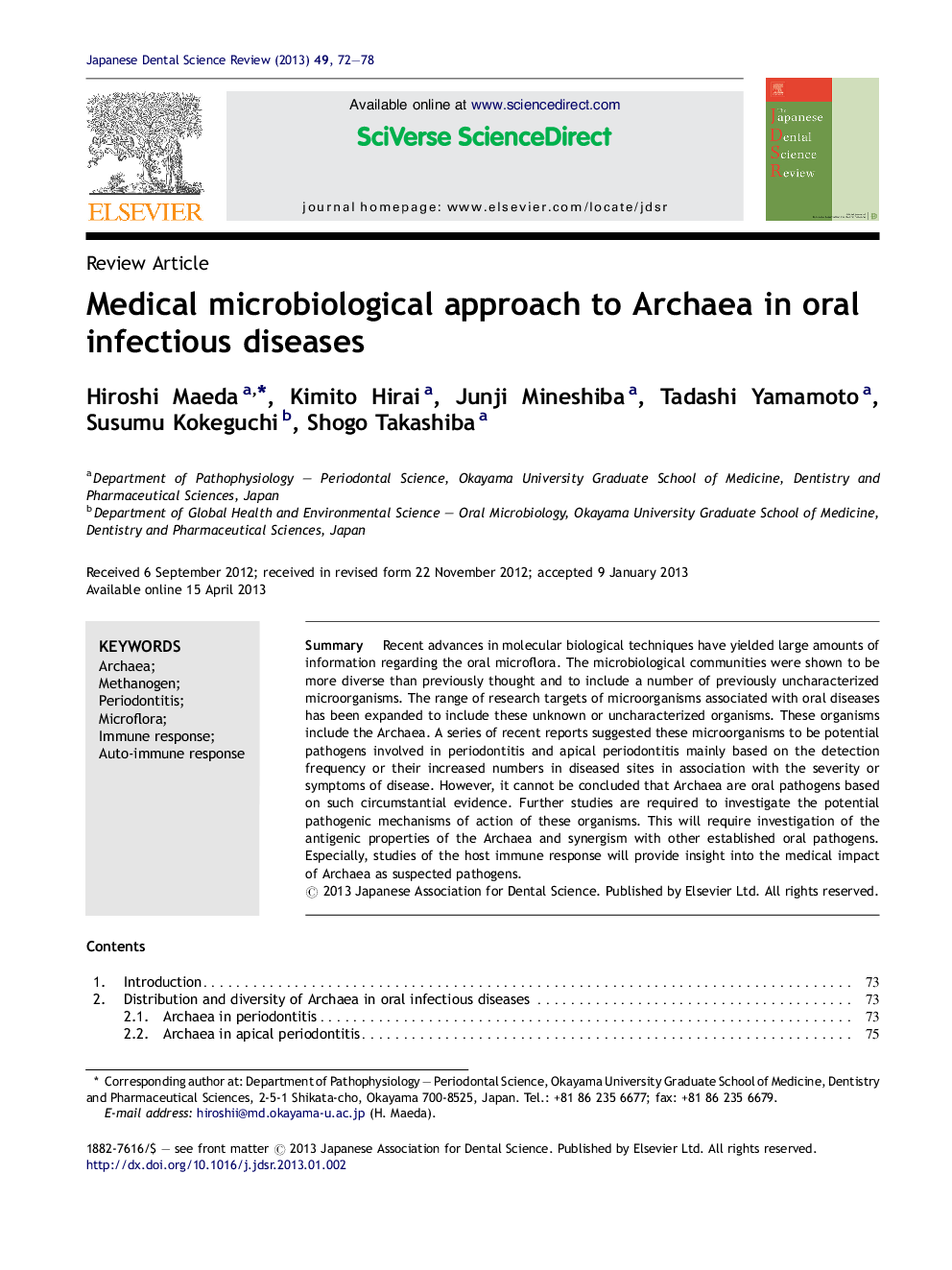| کد مقاله | کد نشریه | سال انتشار | مقاله انگلیسی | نسخه تمام متن |
|---|---|---|---|---|
| 3136714 | 1195490 | 2013 | 7 صفحه PDF | دانلود رایگان |

SummaryRecent advances in molecular biological techniques have yielded large amounts of information regarding the oral microflora. The microbiological communities were shown to be more diverse than previously thought and to include a number of previously uncharacterized microorganisms. The range of research targets of microorganisms associated with oral diseases has been expanded to include these unknown or uncharacterized organisms. These organisms include the Archaea. A series of recent reports suggested these microorganisms to be potential pathogens involved in periodontitis and apical periodontitis mainly based on the detection frequency or their increased numbers in diseased sites in association with the severity or symptoms of disease. However, it cannot be concluded that Archaea are oral pathogens based on such circumstantial evidence. Further studies are required to investigate the potential pathogenic mechanisms of action of these organisms. This will require investigation of the antigenic properties of the Archaea and synergism with other established oral pathogens. Especially, studies of the host immune response will provide insight into the medical impact of Archaea as suspected pathogens.
Journal: Japanese Dental Science Review - Volume 49, Issue 2, May 2013, Pages 72–78